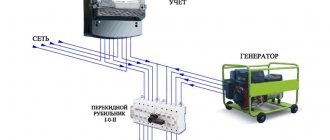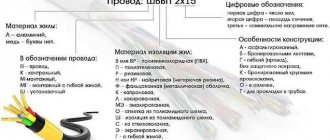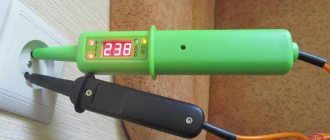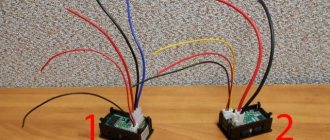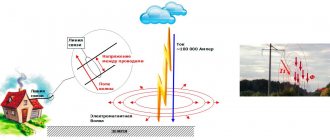What is the connection specification?
Let's start with the fact that this specification is not a separate document, it is an annex to the agreement concluded between the consumer and the service provider. That is, in essence, this is an individual document that lists the technical requirements and necessary measures to connect a certain object to the power supply network. In addition, the technical specifications indicate: type and connection point, characteristics of input devices, metering equipment, etc.
Specifications for connection are annex to the contract
The development of technical specifications is carried out by the supplier to whose electrical equipment it is planned to connect. The calculations take into account the terrain plan, the requested power (an important criterion that determines the various components of the technical conditions), the resources of the current power supply scheme, the prospects for its development, as well as other factors.
Rules for conducting electricity to the site
The only task of the network operator is how to supply electricity to the land plot. Having provided the owner of the allotment with access to electricity at the border with the site, the operator entrusts the remaining installation work on the territory exclusively to himself (clause 16.3 of the Technological Connection Rules).
The applicant has the right to involve a specialized private organization in this work, as well as in the preparation of the electricity supply project, but he will bear all expenses independently.
How to connect a private housing construction site to electricity without a home is described in the technical specifications. As a rule, on a building site there is a change house, construction equipment, and other utilities.
If they are not there, this does not mean that it is impossible to conduct electricity. In this case, the electrical panel is mounted on an electrical pole located on the border with the site, and connections are made to it.
Cable distribution across a site can be carried out in two ways: overhead and underground. In case of cable laying over the air:
- the distance between electrical supports is up to 15 m;
- the distance from the last electrical support to the cable entry into the building does not exceed 10 m;
- the cable height should not be more than 6 m, and the lowest sagging point should not be lower than 3.5 m, so as not to touch vegetation and other objects;
- the cable enters the building at a height of 2.75 m;
- a SIP cable with a minimum cross-section of 16 mm is used, equipped with a supporting cable.
In the case of underground installation of electrical cables:
- cable depth is from 80 cm;
- protective pipes rise to the level of at least 2 m of the electrical support, from which the cable goes into the ground;
- the cable is protected from mechanical damage by a corrugated hose or other protective pipe;
- a warning tape is laid at a distance of 25 cm from the wire, which will warn about the presence of a cable;
- the width of the trench for laying is at least 30-40 cm;
- Before backfilling, the functionality of the cable is checked.
The underground installation method is relevant only for individual housing construction sites with buildings. For areas without buildings, aerial laying is more appropriate: it is cheaper and more practical.
Why is it necessary to obtain specifications for power supply?
According to the current Rules, the development of technical specifications is carried out in the following cases:
- Commissioning of new facilities.
- Increasing the capacity of existing consumers, for example, expanding production, increasing the development plan of a dacha complex, etc.
- Modernization of the electricity supply scheme, which is practiced when the input point or reliability category changes.
In all of the above cases, a new power supply contract is drawn up, to which the corresponding specifications are attached. When changing the ownership of a consumer connected to the network, there is no need to develop new technical conditions; in such cases, the contract between the electric company and the new owner is only renegotiated. That is, the specifications in the application remain unchanged.
How to obtain technical specifications?
As already mentioned, the technical specifications are not a separate document, it is an annex to the agreement between the service provider and the consumer; to obtain a description of the technical conditions, the following procedure is provided:
- It is necessary to submit an application to the electric company in order to conclude an agreement for receiving energy supply services.
- Sign an agreement that defines the legal and technical aspects of the issue.
- Fulfill the requirements specified in the technical specifications, as well as other undertaken obligations specified in the agreement signed by the parties.
- Contact Gosenergonadzor to obtain consent to connect the facility to the power supply system.
- The network company fulfills its obligations and connects the facility in accordance with the specifications specified in the annex to the contract.
Connecting a residential building to the electrical network - Upon completion of the process, both parties sign an act confirming the connection of the facility in accordance with the conditions given in the application.
How to increase electricity power in an apartment
Many homeowners in apartment buildings are faced with the need to increase power. Typically, such needs arise after installing electric heated floors, a powerful air conditioning system or an electric stove. As a rule, apartments can increase their power up to 15 kW, which allows them to take advantage of a reduced tariff.
When increasing power in apartments, there is a certain nuance. It is impossible to allocate additional energy to a specific owner. The balance holder of the network for the whole house must request an increase in power.
The increase in power in the apartment occurs as follows:
- submission of an application by the balance holder of the internal electrical network (management company) to the network organization;
- obtaining a contract and technical conditions;
- fulfillment of specifications;
- checking technical specifications, issuing documents on technological connection and supplying additional power.
The most difficult thing in this process is to convince the management company to fulfill its obligations. Often they do not want to apply and fulfill technical conditions for the sake of one apartment. Therefore, it makes sense to team up with several neighbors.
What documents are needed to obtain technical specifications?
The package of required documents and the data provided in the application for legal entities and individuals are somewhat different. The former must include the following information in their application:
- Full details of the organization, including information about bank accounts.
- Main activity.
- The name of the object with an exact indication of its location.
- For what purpose is the request for technical specifications made (commissioning, modernization with an increase in power, or the need to change the reliability category).
The following documents are submitted along with the application:
- A bank statement or payment document confirming that full payment for services for the development of technical specifications has been made.
- A standard application in the form of a questionnaire is signed by representatives of the customer and the organization that compiled the project.
- Situation plan indicating the location of the connected object and a single-line diagram.
Example of a single line connection diagram - A copy of the document authorizing this work on the site specified in the application.
- Calculation of the facility's power (compiled in accordance with current standards).
- Documents confirming the fact of lease or ownership of the object.
- Confirmation of the right to sign or delegate authority if a third party is handling the registration.
List of documents for individuals
In this case, the application reflects the following information:
- The nature of the object and its exact location.
- FULL NAME. the applicant indicating passport details and IIN.
- For what purpose are technical conditions requested (in the vast majority of cases, this is a connection).
An individual must attach to the application:
- A payment document confirming the fact of payment for the service provided.
- Copies of documents confirming the identity of the consumer (passport and IIN).
- A typical questionnaire containing the main characteristics of the connected object.
- Calculation of power consumption (compiled in accordance with current standards).
- Situational plan with a single-line diagram.
- Documents evidencing ownership rights to the connected object.
If the registration is carried out by a trusted person, then a notarized power of attorney and copies of the intermediary’s documents are additionally attached.
Dedicated power and input machine
In accordance with the value of the allocated power, a corresponding input circuit breaker (or circuit breaker) is installed in the electrical panel, where the external power cable of the electrical network is supplied, which is located immediately after the electric meter.
The device is a box with a switch designed to protect the entire electrical wiring of the house from overload and short circuit currents, as well as a general disconnection of its power supply from the external line. As a rule, after the introductory circuit breaker, additional circuit breakers are installed for various types of loads.
Input circuit breakers can be single-pole, two-pole (used in single-phase electrical networks) and three-pole (used in a three-phase network and allow each phase to be disconnected). For example, with an authorized power of 5.5 kW, a 25 A input circuit breaker (C25) will be installed in the electrical panel. On the Internet you can easily find tables that indicate the permitted power of each circuit breaker model.
What data is contained in the technical specifications?
The information in documents for legal entities and individuals is also somewhat different. The first ones receive a document that reflects:
- Complete data about the object (location, functions and commissioning date).
- Reliability category, design load.
- Indication of connection points and method, for example, via TP, RU or direct connection.
- Information about the parameters of the electrical network and the availability of power reserve.
- Calculation of the value of the rated short-circuit current.
- Indication of requirements for equipment that compensates for the reactive component of power consumption.
- If the nature of the consumer can negatively affect the quality of electricity, then instructions are provided for connecting special equipment.
- A number of requirements for emergency automatic systems used by consumers, including frequency shedding, etc.
Since specifications are individual, it makes no sense to list all possible requirements. Below, as an example, the specifications for connecting a summer cottage are given.
Specifications for a summer cottage
It should be noted that as the power of the connected object increases, the requirements for it increase, which is reflected in the technical specifications. This is clearly seen in the specifications for contracts with individuals, where the load power is limited to 15.0 kW. Let's consider the standard technical conditions specified in the annex to the contract for connecting a house. This document includes the following information:
- FULL NAME. customer and the address where the connection is made.
- Type of object (usually a residential building).
- Permissible load.
- Type of network (single-phase or three-phase) and voltage in it.
- Requirements for electricity consumption metering devices.
- Indication of parameters for protective devices that turn off the power supply when emergency situations occur and the permissible load power is exceeded.
- A list of technical requirements for the arrangement of protective grounding, lightning protection, as well as other systems that ensure the proper level of electrical safety at the connected facility.
A fragment of standard requirements for ensuring technical conditions for connecting the electrical network to a private residential building is given below.
Example of technical specifications for connecting a private house
Selection of the “Calm” voltage stabilizer model for home protection
So, having data on the allocated power, you can easily select a suitable voltage stabilizer model to protect the entire electrical system in the house.
When choosing a stabilizer model for centralized connection of electrical appliances, you need to pay attention to its technical capabilities. For example, it is important that the device has terminal blocks through which it can be easily connected to the mains.
The design should also be taken into account. If the stabilizer will be installed next to the electrical panel, then it must be able to be wall mounted. The noise level is important when installing the device in a residential area.
Selection according to the nominal value of the introductory machine
Stabilizer for single-phase network
For example, a 220 V network with a permissible output power of 5.5 kW is installed in a house with a 25 A input circuit breaker installed. In this case, wall-mounted IS7000 voltage stabilizer models with an output power of 7000 VA / 5000 W or IS1106RT for floor or rack installation are ideal with output power 6 kVA / 5.4 kW.
Stabilizer for three-phase network
Another example. A three-phase network of 380 V for 15 kW was installed in a private house. In this case, each phase accounts for 5 kW. Accordingly, three 25 A single-phase circuit breakers are installed in the electrical panel. In this case, there are several options to protect the entire electrical system of the house.
| Option | Description |
| 1) Installation of a single-phase stabilizer on each supply phase | If the house has only single-phase consumers, then the most convenient and functional option for providing protection would be to install one voltage stabilizer for each phase. For our case, the above IS7000 stabilizers for 7 kVA/5 kW or IS7000RT for 7 kVA/5.5 kW are also suitable. Note! This option has increased resistance to problems in the power supply, which is determined by the independence of the stabilizers from each other: a failure in a separate phase or a malfunction of one of the devices will not affect the functioning of the other two phases and the condition of the stabilizers installed on them. |
| 2) Installing a voltage stabilizer with a 3:1 configuration | Another option for providing centralized home protection from unstable mains voltage is to connect a voltage stabilizer that has a special configuration (three-phase input and single-phase output). The device can be installed immediately after a three-phase input circuit breaker. The line of models from the Shtil Group of voltage stabilizers with a 3:1 configuration includes the IS3120RT model with a power of 20 kVA/16 kW, which will provide reliable connection and protection of a single-phase load to a three-phase network with uniform loading of all supply phases, which eliminates the possibility of network imbalance and eliminates from the need for constant interphase balancing. It is important to note that the power of connected devices may be greater than the power of an individual phase. |
| 3) Connecting a three-phase voltage stabilizer | If there are three-phase consumers in the house, three-phase models of voltage stabilizers that operate on a 380 V network will be required. In the line of inverter stabilizers of the InStab series from the Shtil Group, the IS3320RT model with a power of 20 kVA/16 kW is presented, which will ensure protection of the entire volume as a three-phase , and single-phase electrical equipment in the house. |
Selection depending on the total load power
You can also select the necessary voltage stabilizer model for centralized home protection based on the total power consumption of the load that is currently connected or planned in the future.
For example, in a house with a 220 V network, the following single-phase electrical appliances are installed, to which a voltage stabilizer must be connected:
| electrical appliance | Power consumption, in W |
| TV | 200 |
| Lighting (indoor and outdoor) | 1500 |
| Boiler | 1500 |
| Fridge | 1500 (including starting currents) |
| Microwave | 1500 |
| Total power | 6200 |
To this amount it is necessary to add a 30 percent margin (6200 x 1.3), since when the mains voltage drops, the output power of the stabilizer will decrease, which can lead to its overload and switching to bypass mode. Therefore, the required output power of the stabilizer will be at least 8000 W.
If you choose from the line of inverter voltage stabilizers of the InStab series, then single-phase models are well suited for this example:
- IS10000 10 kVA/9 kW for wall installation;
- IS10000RT 10 kVA/9 kW for floor or rack mounting.
Compliance with technical conditions
In accordance with the current Rules, the consumer is obligated to create the necessary conditions for connecting to the power grid. These specifications are provided in the appendix to the agreement between the service provider and the consumer.
The customer carries out all instructions in the technical specifications at his own expense; in addition, he must also pay the supplier all additional costs, if any. This may include excavation work for laying cables, installation of supports for overhead lines if the connected facility is remote from the service provider’s power grid. In such cases, the electrical equipment paid for by the customer becomes his property.
Deviation from the technical connection conditions is unacceptable. In cases where there are grounds for deviation from the requirements in the annex to the contract, official permission should be obtained for this. It must be issued by the organization that developed the technical specifications.
Drawing up a wiring diagram
The wiring diagram in the garage is no different from the wiring in an apartment or private house. Any owner can complete this task independently, because... it's not complicated. But electrical wiring must be not only functional, but also safe.
To draw an electrical wiring diagram, first select a point on the garage wall for the entry of the power cable and a location for installing the distribution panel. After this, the drawing indicates the most suitable points for installing sockets, switches and lamps. The last stage is the correct connection of the elements with lines indicating cable laying.
The main rules for electrical wiring:
- The power cable is always laid only vertically or horizontally. Do not place the wire at an angle to another area.
- The cable is laid at a distance of at least 100 mm from the ceiling, 150-200 mm from corners, door and window openings, and heating radiators.
- Sockets should be at a height of 500-600 mm from the floor. On average, their number is taken to be 1 device for every 6 m² or one for every 4 linear meters. The installation height of switches from the floor is 1.5 m, the distance from the door jambs is 0.15 m.
- All electrical devices must be protected from dust and moisture, i.e., comply with protection class IP44.
